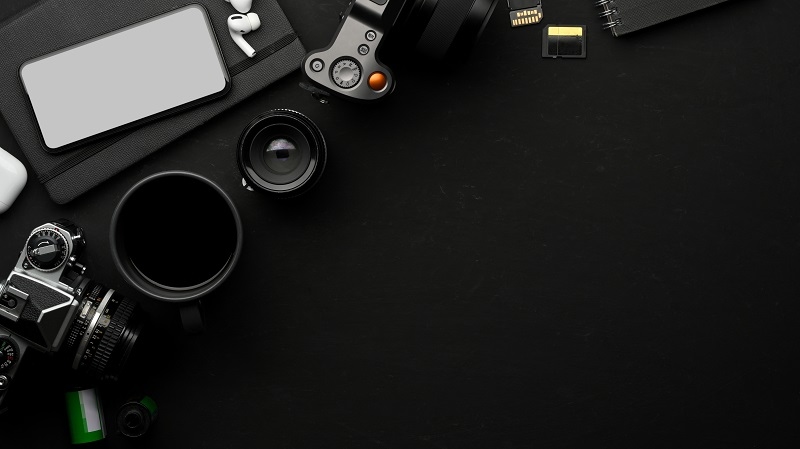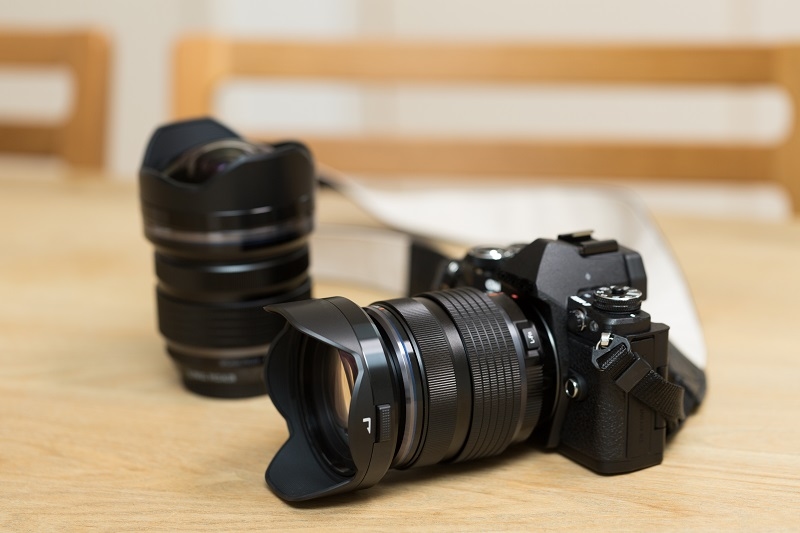Tips for Preventing Camera Overheating During Long Shoots

When you are out in the field taking that crucial final photo, the last thing that you want to happen is that your camera dies because it overheats. Whether you are a pro working on an assignment or a beginner covering a scorching outdoor wedding, preventing camera overheating is essential. Your camera cooling must be assured to allow your device to operate at its best and to extend its life. This guide will offer affordable cooling tricks, tips for saving money, and safety tips on how to set up your camera for long shoots.
Why Camera Gets Hot
There is no escaping overheating unless you realize why a camera overheats in the first place. Cameras, especially DSLRs and mirrorless models, produce heat from internal circuits, image processing, and battery operation. Burst shooting with autofocus, high-definition capture, or 4K video are all contributing factors. And then add it on top of the direct sunlight when you're photographing outside, and you have the recipe for an overheated camera.
Top tip: If you are aware of the reason why camera gets hot, you can take measures to assist in the protection of your kit.
- Sensor and processor workload: Cameras are plagued by enormous amounts of data, especially if you are working sequentially or shooting all day.
- Battery drain: Lithium-ion batteries will heat up on prolonged shoots, contributing to overall device heat.
- External factors: Heat, sun, and reflective surfaces will contribute to heat build-up.
Knowing the causes is the first measure for preventing camera overheating during summer or hot shooting.
Preparation for Shooting Outside
Preparation is crucial in sun shooting. Outdoor shooting heat tips are necessary to protect your camera performance and your health. Preparation can minimize the risk of overheating and keep your investment intact.
- Plan ahead: Try to photograph outside of the mid-day sun hours, usually 11 a.m. to 4 p.m., when the sun is highest in the sky and UV radiation is strongest.
- Use shade: Get into the shade of trees, umbrellas, or makeshift awnings to get your camera out of the direct sun.
- Lens hoods and shades: Not only do these help to eliminate lens flare, but they also provide a heat-deflecting shield.
By incorporating outdoor shooting heat tips into your plan, you can extend your camera's shooting time without damaging it.
Summer Tips to Safeguard Your Equipment
Summer shooting is one that requires special care. Protecting gear in summer protects your camera and you from heat-related damage fees.
- Safety Habits: Simple summer habits will protect your equipment and camera.
- Place cameras in a bag: Cameras have to be kept in camera bags when being carried between locations. Cameras cannot be left in parked vehicles.
- Avoid metal surfaces: Metal tripods or countertops can conduct heat; use a middle material or shade if necessary.
- Water and breaks: Similar to your body, your cameras also require a break at times. Give yourself a break and let your camera cool down every now and then.
By keeping the gear cool with the advent of summer, you prevent heat failure and get the best out of your camera.
Affordable Cooling Tricks for Your Camera
You do not necessarily have to spend a fortune cooling an overheated camera. You can utilize cheap methods of cooling that really work very effectively, especially for professional cameramen or filming in hot climates.
- Main point: Miraculous cooling is possible with inexpensive materials and minimal adjustments.
- Save extra batteries: Battery replacements provide a cool-down time between re-use and save overheating.
- Reflective wraps: Wrap your camera in a heat reflective material or sun reflective sleeves for the same purpose to reflect the heat.
- Portable fans: A low-wattage, battery-operated fan blowing across your camera can dissipate heat internally during stills. Reflective wraps and battery replacement also suit underwater cameras.
- Temporary shade devices: An open umbrella or a cardboard sunshade will bail you out during prolonged outdoor shoots.
These low-cost cooling techniques not only protect your camera but also enable you to shoot without interruptions.
Symptoms of Overheating
Pre-maintenance of overheating symptoms helps you respond before any damage has been done.
- Best practice: Forewarnings of overheating symptoms spare you the expense of recovery from irreversible damage to your camera.
- Shut-down warning: Most modern cameras have an overheating warning as temperatures approach a point of criticality.
- Slowness: Sluggish focus or sluggish image processing can be indicative of heat stress.
- Discolored screens: Random tinting or blurring of the screen may also be a symptom of overheating.
The moment you notice these signs, apply novice-friendly overheating remedies to prevent any other problem.
Overheating Fixes for Beginners
Being a photography beginner does not imply that one can never prevent overheating. Novice-friendly overheating solutions are easy to use and effective, and will see you through your session in a successful manner. Heat from the camera can be controlled by anyone who has very basic equipment and expertise.
- Temporary shutdown: Turn the camera off for 10-15 minutes to provide room for cooling.
- Remove memory cards and batteries: These are most likely to have excess heat and should be removed to lower inner temperatures.
- Manual setting: Autofocus or constant video streaming is continuously generating excess heat. Manual focus and shorter shoots reduce the burden.
- Avoid high-definition video for an extensive period: Recording video at 4K or above for a long time is among the primary causes for the camera getting hot. Reducing the resolution or frame rate will solve the problem.
The above new overheating fixes for beginners can help avoid damage and grant your equipment extra longevity, even with extended shooting.
Amateur Shoot Tips for Long Outdoor Shoots
Additional pro photographer or serious amateur outdoor shoot tips for preventing overheating of the camera are:
- Pro-tip line also: Longer takes require more planning and improvisational cooling methods.
- Wet mount: Having the camera in constant use can transfer body heat. A wet mount keeps this away.
- Ice pack standby: Put an ice pack in a bag (not in front of the camera) to provide your region of interest to capture some cool atmosphere.
- Lens caps standby: Have the lens capped when not recording to leave as many internal sensors as possible out of the heat.
- Rotate cameras: Make changes between multiple cameras if available, so each one gets a turn to rest.
They supplement standard overheating protection and enable smoother, unbroken shooting.

Maintenance Routines to Prevent Long-Term Damage
Maintenance is the optimum solution for preventing camera overheating and maintaining equipment performance in peak condition.
- Best practice: Maintenance routines protect your investment and guarantee shoot reliability.
- Clean inner vents: Vent debris or dust will interfere with heat. Clear them regularly using an air blower or soft brush.
- Firmware updates: Developers release updates for improved thermal regulation. Update camera firmware routinely.
- Store properly: Store your camera in a dry and cool area when not in use, rather than in sunlit places or sweltering attics.
- Check batteries: Expired or dead batteries give off abnormal heat. Replace them in an effort to reduce the risks of overheating.
These are the maintenance techniques that will see your camera endure the summer heat without affecting its efficiency.
When to Call a Pro
Overheating is occasionally a matter of use or weather—it could indicate something is wrong with the hardware.
- Top line: Ongoing overheating is not to be taken lightly; expert inspection can prevent major damage.
- Ongoing overheating warnings: If your camera consistently overheats, it may be in need of maintenance.
- Smoky or burning smell: Any burning scent, strange odor, or smoky event requires professional maintenance right away.
- Internal damage: Extended heat will bend the sensor or circuit board, and professional service is required.
Professional maintenance keeps the camera in working condition to avoid long-term damage.
Conclusion
Preventing overheating in a camera is not necessarily preventing trouble at all—it is protecting your investment. Understanding why cameras overheat, preparing for outdoor photography, experimenting with low-cost cooling techniques, and adopting effective solutions to prevent overheating can make all the difference in maintaining trouble-free photography even in extreme temperatures.
Don't forget, summer shoots demand special care. Protect yourself and equipment with summer shoot safety, and using outdoor heat shooting techniques will be stress-relieving for your equipment and you. Proper maintenance, savvy shooting practices, and monitoring overheating signs can be the difference between a problem-free session and a miserable session. With such precautions, camera overheating is never a problem and helps your creative process from being disturbed by heat.
This content was created by AI

